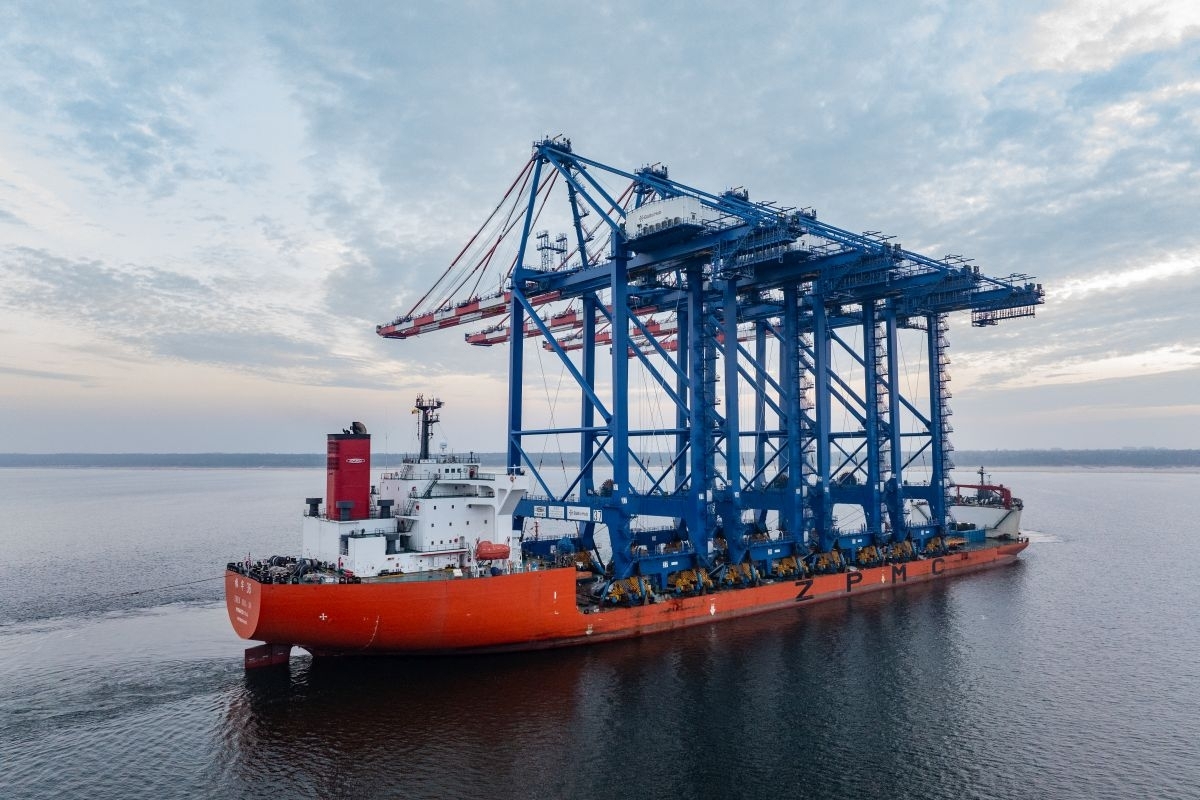
On Sunday, October 27, four modern STS
cranes arrived at the T3 quay at the Gdańsk container terminal
Baltic Hub after two months of travel from China. These are the first
of seven STS cranes, which in 2025 will increase the transshipment
capacity of the Baltic Hub by 1.5 million TEU.
From the area
of the beach in Stogi district, the residents of Gdańsk could admire
the spectacular moment of the arrival of the gigantic STS cranes -
some of the largest in Europe. After loading in Changxin, China, the
four impressive machines set off on a long journey to the Baltic Hub.
After almost two months of sailing and 16,115 nautical miles (almost
29,500 km), they reached the port of Gdańsk.
The four most modern STS (ship-to-shore) quay cranes, capable of handling the largest container ships in the world, are even larger and higher than the previous ones already operating at the terminal. Each weighs almost 2,000 tons, is over 96 meters high (140 m with the boom raised), and is able to lift a container to a height of 55 meters and above the ship's deck to a length of 74 meters, with a lifting capacity of up to 65 tons.
- The arrival of the huge, fully
assembled STS cranes perfectly demonstrates the level of advancement
of the T3 investment and brings us closer to completing the project
and being ready to meet the needs of our customers in 2025 - said
Charles Baker, CEO of Baltic Hub.
Unloading of the cranes will
begin on Monday and may take up to 10 days.
The T3 terminal will be equipped
with seven quay cranes. Three more will arrive in March 2025. The
delivered STS cranes are to start operating in the first half of
2025.
Baltic Hub, which was launched in
2007 under the name DCT Gdańsk, currently has a transshipment
capacity of up to 3 million TEU per year. The total length of the
terminal's two deep-water quays is 1.3 km, which allows it to handle
four ships at the same time. The terminal handles over 700 ships a
year, including the world's largest container ships. In 2023, the
terminal handled 2.05 million TEU. It employs over 1.4 thousand
people.


